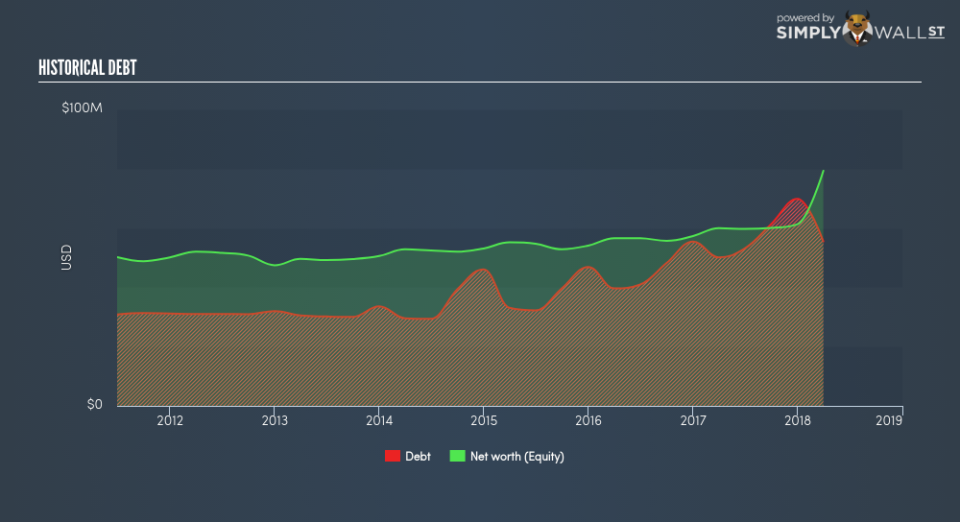What Investors Should Know About RGC Resources Inc’s (NASDAQ:RGCO) Financial Strength

RGC Resources Inc (NASDAQ:RGCO) is a small-cap stock with a market capitalization of US$231.81m. While investors primarily focus on the growth potential and competitive landscape of the small-cap companies, they end up ignoring a key aspect, which could be the biggest threat to its existence: its financial health. Why is it important? Assessing first and foremost the financial health is vital, as mismanagement of capital can lead to bankruptcies, which occur at a higher rate for small-caps. Here are few basic financial health checks you should consider before taking the plunge. Nevertheless, this commentary is still very high-level, so I recommend you dig deeper yourself into RGCO here.
Does RGCO produce enough cash relative to debt?
RGCO’s debt levels surged from US$48.19m to US$61.31m over the last 12 months – this includes both the current and long-term debt. With this rise in debt, RGCO’s cash and short-term investments stands at US$96.42k , ready to deploy into the business. Moreover, RGCO has produced US$12.98m in operating cash flow in the last twelve months, resulting in an operating cash to total debt ratio of 21.17%, meaning that RGCO’s current level of operating cash is high enough to cover debt. This ratio can also be interpreted as a measure of efficiency as an alternative to return on assets. In RGCO’s case, it is able to generate 0.21x cash from its debt capital.
Can RGCO pay its short-term liabilities?
Looking at RGCO’s most recent US$14.37m liabilities, it appears that the company has been able to meet these commitments with a current assets level of US$15.69m, leading to a 1.09x current account ratio. For Gas Utilities companies, this ratio is within a sensible range since there’s sufficient cash cushion without leaving too much capital idle or in low-earning investments.
Can RGCO service its debt comfortably?
RGCO is a relatively highly levered company with a debt-to-equity of 69.98%. This is not unusual for small-caps as debt tends to be a cheaper and faster source of funding for some businesses. No matter how high the company’s debt, if it can easily cover the interest payments, it’s considered to be efficient with its use of excess leverage. A company generating earnings after interest and tax at least three times its net interest payments is considered financially sound. In RGCO’s case, the ratio of 4.96x suggests that interest is appropriately covered, which means that debtors may be willing to loan the company more money, giving RGCO ample headroom to grow its debt facilities.
Next Steps:
At its current level of cash flow coverage, RGCO has room for improvement to better cushion for events which may require debt repayment. However, the company exhibits an ability to meet its near term obligations should an adverse event occur. This is only a rough assessment of financial health, and I’m sure RGCO has company-specific issues impacting its capital structure decisions. I suggest you continue to research RGC Resources to get a better picture of the stock by looking at:
Future Outlook: What are well-informed industry analysts predicting for RGCO’s future growth? Take a look at our free research report of analyst consensus for RGCO’s outlook.
Historical Performance: What has RGCO’s returns been like over the past? Go into more detail in the past track record analysis and take a look at the free visual representations of our analysis for more clarity.
Other High-Performing Stocks: Are there other stocks that provide better prospects with proven track records? Explore our free list of these great stocks here.
To help readers see pass the short term volatility of the financial market, we aim to bring you a long-term focused research analysis purely driven by fundamental data. Note that our analysis does not factor in the latest price sensitive company announcements.
The author is an independent contributor and at the time of publication had no position in the stocks mentioned.

